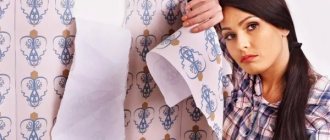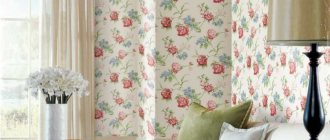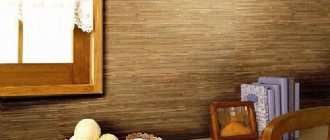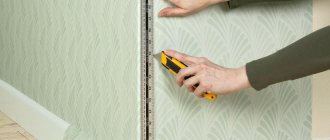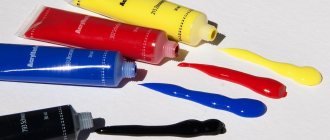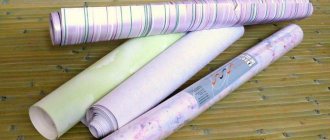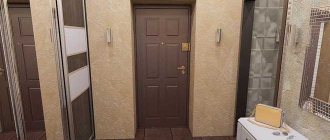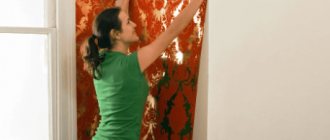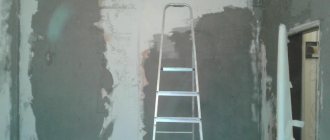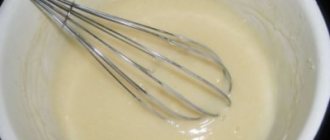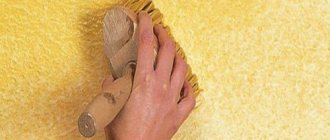Budget-friendly renovations often include the use of wallpaper. However, in order to understand how much wallpaper you need, you must first conduct a proper accounting of the material. And here the question arises: what is wallpaper rapport in itself, what does it give as a concept? This is a repetition of a certain pattern on a sheet of wallpaper. There is a distinction between lateral rapport and the one that goes along the height. The latter is repeated repeatedly along the height of the sheet itself, and the side - along the width. But this directly depends on the specific size and type of the drawing itself. Having information about what wallpaper rapport is in practice, you can imagine how it will look specifically on your walls, and you don’t even have to use a piece of paper for this. You can simply visualize the result by calculating the scale, angle of incidence of light or its refraction.
This information can be found directly on the wallpaper rolls; rapport data is available when purchasing a particular model. With this information, you can make an informed decision about whether to purchase a particular version or not. Modern versions are specially packaged in film, under which you can always find a sheet of markings with exact symbols and numbers. And if you understand them, then this is a real chance to avoid a wrong choice. Some symbols show how long the wallpaper is guaranteed to serve you and how resistant it is to light. Others allow you to understand in what order you should paste the wallpaper and what overlay is allowed.
Material selection
Before you understand how to join wallpaper so that there are no gaps, let's talk about the features of installing some materials:
- paper is a budget option for wallpaper that requires some attention in work. The paper layer is quickly impregnated with the adhesive composition, and there is little time left for installing and rolling the canvas. At the same time, one should not lose sight of joining with another strip and combining patterns. The slightest delay - the wallpaper softens and tears;
- bamboo - are distinguished by reliability, excellent appearance, long service life, and certain installation features. To paste such wallpaper, you will need the help of a partner - the material must not be bent after applying the glue; you will have to ensure that the strips adhere evenly to the surface;
- leather - this option is considered a sign of luxury and implies careful handling;
- vinyl - this material has a difference. The glue-treated canvas should lie for a while to become saturated. Then it is applied to the wall and rolled with a roller made of rubber material. Vinyl stretches, and this will have to be taken into account at the joints;
- non-woven wallpaper - this wallpaper is easy to install. Only the wall is treated with adhesive, after which the canvas is applied to it.
When buying wallpaper, it is recommended to clarify how to glue it evenly so that the wall looks attractive.
How to glue wallpaper with a pattern without displacement?
When gluing wallpaper with images that do not need joining, you must follow this scheme:
- Using the previously made calculations, cut the roll into strips so that their length matches the repeat step and slightly exceeds the height of the room.
- Glue wallpaper taking into account rapport. Each strip should start with the same pattern, that is, the canvases must be selected in such a way that the images match. If you use a strip from another roll for alignment, there will be less waste.
- Thin sheets must be glued with an overlap. Start working on the wall closest to the window so that the overlaps are less noticeable.
- Place the first strip near the corner from the drawn vertical line. Next, glue the wallpaper as usual.
- Once you have glued the opposite wall to the corner, go back to the first vertical line you used as a reference point and continue gluing from there.
How to properly glue wallpaper with patterns?
It is necessary to work with wallpaper with prints extremely carefully and carefully, because there are a lot of certain nuances. If you know all these features, you can avoid mistakes in the form of pattern inconsistencies.
Features of wallpapering with a pattern:
- When purchasing material, it is necessary to take into account that due to the need to combine prints, the amount of waste will significantly increase. Therefore, you definitely need to buy rolls with a reserve. Knowing the pitch of wallpaper rapport, you can clearly calculate the required number of tubes.
- To perfectly align the pictures, you need to leave a few centimeters of allowance on both sides of the strip.
- Maximum attention should be paid to the joints when gluing.
Important! To reduce waste, it is recommended to cut pieces from different rolls during the design selection process.
How to calculate wallpaper with pattern adjustment?
Wallpaper with large or complex patterns must be customized, so the calculation process will be longer. In this case, the length of the canvas should be greater than the height of the room and a multiple of the repeat. Let's look at the calculation process for a room with the same parameters (ceiling height - 2.5 m, perimeter - 18 m). The roll is 53 cm wide, 10 m long, the size of the repeat on the wallpaper will be 38 cm.
You will need to perform calculations in the following sequence:
- The first step is to calculate the length of the strip. It is necessary to divide the height of the room by the size of the rapport, then round the resulting figure up. We get 7 as a result. This indicator should be multiplied by rapport, then divide this result by the length of the roll. It is recommended to round the last number down. We will have 3 cuts.
- The number of tubes is then calculated. First, we find the number of strips; to do this, divide the perimeter by the width of the roll and round. Divide the resulting figure by the number of stripes in the tube and round. That is, our premises will need 12 rolls.
As you can see, the difference between the required number of wallpapers with a print without matching and pictures that need adjustment will be as much as 3 tubes.
Important! To make you feel comfortable not only in terms of aesthetics, but also practicality in a room with a new finish, also look at the reviews:
- Types of wallpaper - materials, texture, properties.
- The best wallpaper glue.
Features of gluing and joining
Choosing an original option for wall decoration is not considered a problem today. But if the work is entrusted to a specialist, such services will require serious financial expenses, so many decide to do the repairs on their own.
One of the main stages is gluing the walls with wallpaper. At first glance, the process seems simple; its essence lies in following certain rules for finishing corner and joining areas, observing the vertical arrangement of the canvases, and combining patterns.
We propose to consider what direct joining is on wallpaper, the width of which is 64 cm.
How to glue canvases with an offset pattern yourself?
It often happens that the details of the pictures in all the stripes at the edges do not match in height, so such wallpaper is glued with an offset pattern. If you use adjacent strips from the same roll, then the result will be simply unrealistic overexpenditure. In such cases, it is necessary to use some tricks to save material.
It is necessary to carry out gluing according to the instructions:
- Take two tubes and unwind them on the floor.
- Align the fabric from the second roll with the strip from the first roll.
- Place the cut sheets into two piles. Due to this, the pattern on the canvases from two rolls is guaranteed to match.
- Glue strips from both stacks, alternating them according to the pattern: the first sheet from the first stack, the second sheet from the second stack, the third sheet from the first stack, the fourth sheet from the second stack, and so on.
Features of marking walls and placing large drawings
In the process of gluing wallpaper, we often encounter ceilings and walls that have a slope.
Important! The method of marking directly depends on the level of curvature in the corners.
The following steps should be taken:
- First, measure the height of the room in each corner.
- If the slope is small, then take a laser level or plumb line and mark the walls to maintain a strict vertical line.
- If the difference is more than 6-8 cm, then it is better to glue the wallpaper perpendicular to the ceiling, without taking into account the plumb line. In this case, perfectly aligned vertical stripes will look overwhelmed, thereby creating a visual inclination of the surface.
Important! Canvases with vertical stripes must be glued strictly plumb, without taking into account the degree of curvature of the ceiling.
When the ceiling is uneven, wallpaper with a large print should be glued so that the volumetric element of the picture is located as far as possible from the highest point of the wall. Otherwise, the curvature of the surface will immediately catch your eye. Even if you mark the pattern correctly, it may not match on the first and last stripes because the surface is too crooked. Therefore, it is better to start gluing such materials from the least noticeable place in the room. Don't forget to take into account the rapport of the wallpaper.
Docking methods
Joining canvases when gluing is considered the most complex process, and for its organization there are the following joint options:
- straight;
- displaced;
- arbitrary;
- using an additional element.
Let's start with the offset docking and find out what it means. This method of joining rolled material is considered the easiest. Its meaning is to shift the next strip onto the previous one so that an overlap forms on half of the pattern element. As a rule, the overlap is one to two centimeters.
Now let's look at an arbitrary (free) joining of wallpaper to find out what it is. The main feature is that it is allowed to use straight joints or provide overlap.
The method is suitable for working with wallpaper material that does not have a bright pattern.
Additional elements in the form of plastic overlays and wooden trims are used when joining different wallpaper fabrics, covering the seam areas.
Let's move on to the main question - direct docking - what is it? This option is well-deservedly popular; its meaning implies the correct connection of the canvases closely, without creating overlaps or gaps.
The question “what does direct docking mean?” occurs frequently. The method has certain difficulties, because the decorative layer should not have visible seams.
How to glue wallpaper end to end? The two canvases are compared, their vertical position is checked, the seam should be uniform, without discrepancies or gaps.
How to calculate wallpaper without adjusting the pattern?
There are types of canvases, for example, speckled or vertical striped, that do not need to adjust the images. Let's look at how the calculation occurs using the example of a room that has the following parameters:
- ceiling height - 2.5 m;
- perimeter - 18 m.
The standard roll length is 10 m, width is 53 cm.
You need to do the following:
- Divide the perimeter of the room by the width of the wallpaper tube to get the number of stripes. The result must be rounded up. That is, we get 34.
- Then you need to divide the length of the canvas by the height of the room, we get 4 stripes. Combining the segments will hide the baseboards near the ceiling and floor.
- To get the required number of rolls, divide the first result by the second and round up. As a result, we get 9 tubes.
Important! If wallpaper with an overlapping pattern is glued, then the resulting width of the material must be reduced by several centimeters.
What are the pattern repeats - types
As we know, in knitting the pattern is repeated not only over one row (in width), but also several rows up (in height). Based on this, there are two types of pattern repeat - horizontal and vertical. Let's talk about each type, based on the diagram presented below.
Crochet pattern with repeat markings
Horizontal pattern repeat
Indicates the number of stitches required to repeat one pattern element in one row (widthwise). The horizontal repeat of the pattern is indicated under the first row of air loops (if we are talking about crocheting), often labeled “rapport” or “MS”. In our example, it is indicated by two vertical lines, arrows, and the inscription “rapport.” The number of loops is indicated in brackets - 7 pieces.
The symbols are not always so detailed; sometimes only the boundaries of rapport are indicated. In this case, you need to count the number of loops yourself. An example is below.
Pattern repeat without specifying the number of loops
In knitting, horizontal repeat is determined by the number of cells allocated accordingly in the pattern. Designated similarly. An example is below.
Horizontal repeat in a knitting pattern
Vertical pattern repeat
Indicates the number of rows through which the pattern is completely repeated (in height). It is designated similarly, but opposite the rows, usually on the right side. The number of loops may or may not be signed. For example, in the first diagram of this article, the vertical repeat of the pattern is indicated and amounts to 4 rows.
Often the vertical repeat of the pattern is not indicated . But it is easy to determine visually. You just need to find the moment when the pattern begins to exactly repeat the previous rows. The number of rows before the pattern begins to repeat will be the vertical repeat of the pattern. For example, in the second pattern, the pattern is repeated every three rows. Vertical repeat of this pattern is 3 rows.
Sometimes the vertical repeat of the pattern is equal to the number of rows shown in the diagram. This is the situation in the third example (in the knitting pattern). The vertical repeat of the pattern in it is 23 rows.
Rapport of wallpaper and some design flaws
Wallpaper rapport may be shifted. This means that there is not exactly the same distance between the drawing of the first and second column, the second and third, and so on. Please note that recently diagonal pattern options have become extremely popular; calculations here are somewhat more difficult. But in general, the procedure is not as scary as it might seem. The absence of such an indicator as rapport may mean that we are talking entirely about plain wallpaper, for example, for painting, that this is a fake, for which they forgot to indicate such an important fact. Or that the pattern is too small and evenly scattered across the entire field, although in this case such indicators are taken into account.
